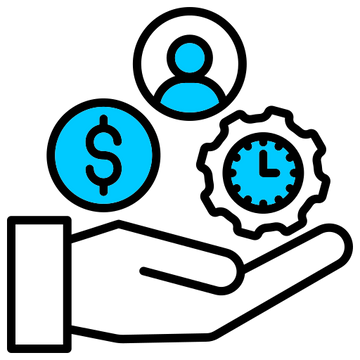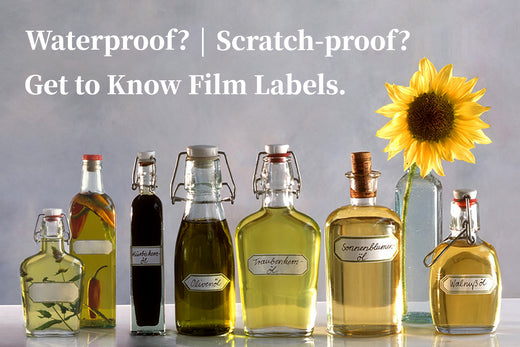

Removable Film Labels
Written by: Beichen Lu
|
|
Time to read 2 min
Film labels are crafted from polyethylene, like plastic material, which renders them more resilient and pliable compared to traditional paper labels. Films represent a highly innovative product that provides distinctive advantages in labeling, presenting opportunities for your benefit.
Table of Content
Film labels offer several advantages compared to other types of labels:
One notable advantage of film labels is their superior resistance to environmental conditions. Many film materials possess "weatherproof" properties, enabling them to withstand water, heat, cold, fading, and tearing. This makes them well-suited for heavy-duty applications. However, it's important to remember that not all film materials are weatherproof. For instance, our film-based clear inkjet materials do not provide water-resistant capabilities.
Flexibility: Unlike paper labels, film labels have a greater degree of flexibility. This allows them to conform to the shape of various items or products, making them a versatile choice.
Durability: Film labels are known for their durability and ability to endure adverse conditions. Their resistance to environmental factors ensures that the labels maintain their quality and legibility over time.
However, it's important to note that film labels do have one disadvantage—they tend to be more expensive compared to other types of labels such as paper labels.
Printing film labels presents other several challenges due to the nature of the materials involved. Not all surfaces of film labels are suitable for printing, as their printing characteristics are influenced by factors like surface tension and the surface's ability to retain ink.
Untreated film surfaces, particularly smooth and non-porous plastics, pose difficulties for printing because inks have a tendency to run and struggle to adhere to the non-polar and water-repellent surface of these materials.
To achieve satisfactory printing results on film labels, pre-treatment of the printing side is necessary. Two commonly employed techniques are the application of a permanent top coat and a more cost-effective method known as corona treatment. Corona treatment involves subjecting the film surface to high-frequency discharge, which increases surface tension and improves bonding properties. Pre-treated films can be printed with smear-resistant text, but over time, as the surface energy diminishes, the bonding capacity of the material decreases. However, this issue can be addressed by replenishing the surface energy of corona-treated materials in specialized corona systems immediately before printing, ensuring optimal printing results.
Film labels are most suitable for outdoor or humid environments, long-lasting applications, or products that undergo frequent use due to their strength and contemporary nature.
If durability is a critical requirement for your application, investing in film labels can save you time, money, and potential difficulties in the long term.
The trade-off of film labels including printability and cost determines that:
If you either has high requirement of printed content or cost, you better not to choose film labels. Remember, there are no perfect labels. There are only most suitable labels.
If you still have more questions about film labels don't hesitate to contact us by cs@betckey.com and our technicial expert will bring more help.
If you want to buy thermal labels or sticker paper, you can check out more on our store
Products Featured In This Blog

24/7 support team

Multiple Payment Methods

Worry-free shopping

Delivery in 3-7 business days
Be the first to know about label discounts,
product launches, and time-saving tips — subscribe now!
Are you 18 years old or older?
Sorry, the content of this store can't be seen by a younger audience. Come back when you're older.
We are very happy with the product and value for our small business
Camaj Fiber Arts.com
On time, package labels that are the right price! Thank you
Dymo 30256 Compatible Large Shipping Labels 2-5/16” x 4”
They are exactly what I need, very easy to use!!!
Everithing was really good, fast delivery, product quality 100% guarantee
Very versatile label for mailing addresses and a marketing to promote a product or get someone’s attention.
Brother DK-2205 Compatible Continuous Labels 2.4" x 100'





